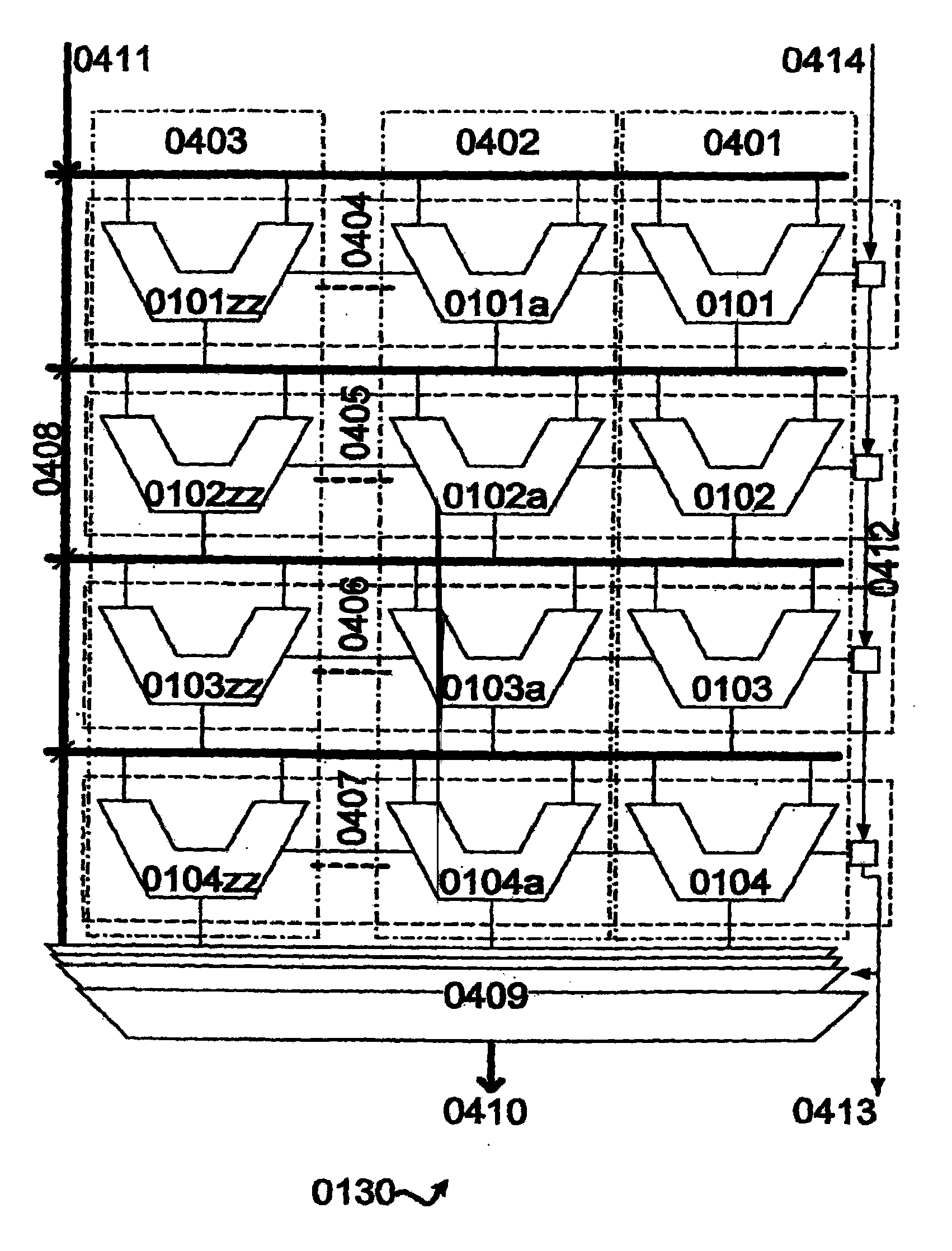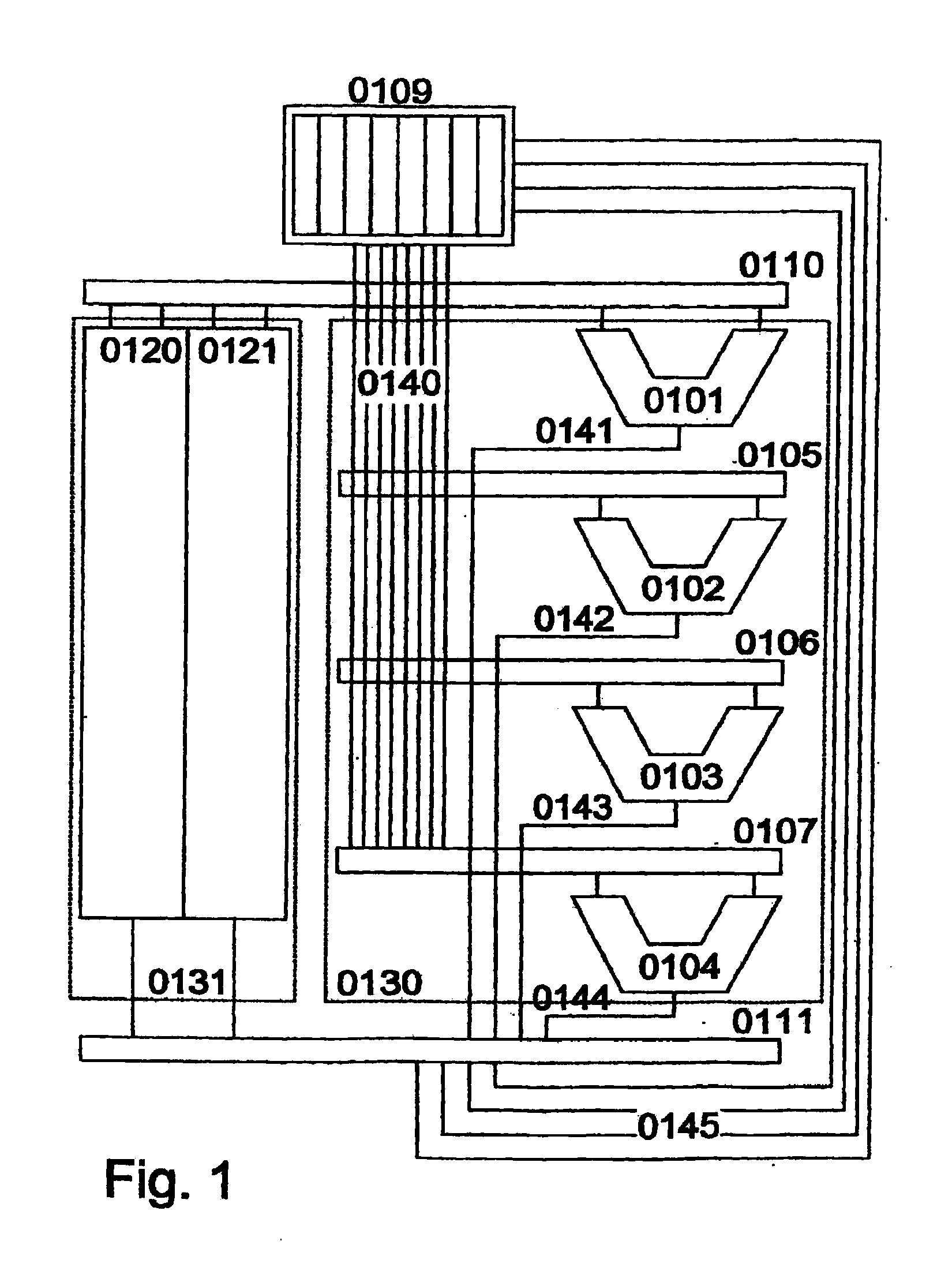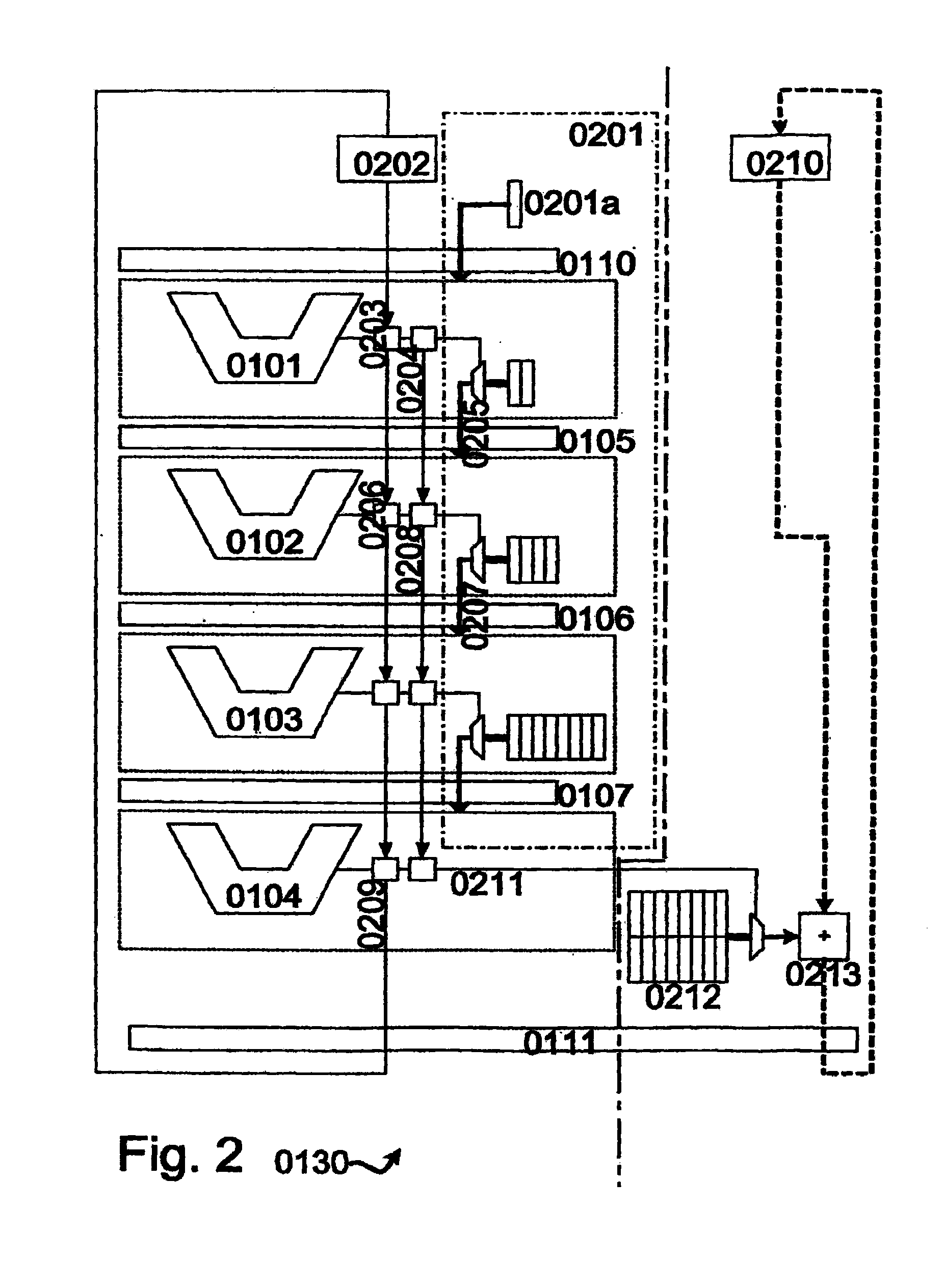Low latency massive parallel data processing device
a data processing device and low latency technology, applied in the field of data processing, can solve the problems of data processing that requires the optimization of available resources and power consumption of the circuit involved in data processing, and achieve the effects of reducing pipeline stalls, reducing pipeline stalls, and increasing performan
- Summary
- Abstract
- Description
- Claims
- Application Information
AI Technical Summary
Benefits of technology
Problems solved by technology
Method used
Image
Examples
examples
[0375]ALIAS state=r6
ALIAS ctx=r7
ALIAS trnsTab=bp3
3.1.4 Object Naming, Default Aliases
[0376]
TABLE 28Assembler naming of objects and registersGroup / Reg.NameDREGr0 . . . r7EREGe0 . . . e7AGREGSbp0 . . . bp7ALU-OUTal0 . . . al2; ar0, ar2Portsp0 . . . p31MemorymemLink Reg.lnkprogram pointerppAliasesFNC:PAE objectfpbp4ap0bp5ap1bp6spbp7
[0377]Immediate values are preceded by “#”. The number of allowed bits of the immediate value depends on the ALU instruction.[0378]Refer to refer Table 9 to Table 17 for the definition which immediate values are available for a specific instruction.
3.1.5 Labels
[0379]Labels define addresses in the instruction memory and can be defined everywhere in between the opcodes. Labels are delimited by a colon “:”. The instructions JMPL, JMPS, HPC, LPC and CALL refer to labels. Furthermore, Data memory sections can be named using Labels. For the Data section, the assembler assigns the Byte-address to the Label, for program memory it assigns the absolute entry (256-bit ...
example
[0391]
FNC_DRAM(0)DemoRam0;BYTE[0x20] ?; reserves 32 bytes of uninitialized dataDemoRam1;BTYE[2] ?; reserves 2 bytes of unititialized dataTable1:BYTE #3 #8 #0x25 #-3 ; defines an initialized table (8 bytes)BYTE #-5 #-8 #0xffBYTE #0b00001010 / / Wordtab: WORD #1 #0, #0xffff; initalize words with 1 0 −1.EndOfRam:; begin of unused RamFNC_IRAM(0); program section (Instruction RAM)NOPMOV bp0,#DemoRam0; loads the basepointer with the address of DemoRam.MOV ap0,#2; offset rel. to bp0 (third byte)NEXTSTB bp0 + ap0, #0 ; clear the third byte of DemoRam0NEXTHALTNEXT
Note:
[0392]FNCDBG fills uninitialized Data RAM sections with default values:[0393]0xfefe: reserved data sections[0394]0xdede: free RAM
[0395]FNCDBG shows the memory content in a separate frame on the right side. Bytes or words which have been changed in the previous cycle(s) are highlighted red. FIG. 20 shows the FNCDBG RAM display.
3.1.7 Conditional Operation
[0396]Arithmetic and move ALU instructions can be prefixed with one of the cond...
example 5a
[0488]shows a two target branch using the HPC and LPC assembler statements for the left and right path. Only the HPC rsp. LPC statement of the active path is used for the branch. LPC requires an additional cycle since the current implementation has only one instruction memory. The instruction at label loopend uses JMPL loop ALU instruction, which allows a 16-bit wide jump. In this example, also an unconditional HPC loop would be possible.
Hardware Background
[0489]The assembler sets the pointers HPC to dest0, LPC to dest1. Furthermore, it sets the opcode's EXIT-L field to select the HPC-pointer if the left path is enabled and the EXIT-R field to select LPC-pointer if the right path is enabled during exit.
PUM
 Login to View More
Login to View More Abstract
Description
Claims
Application Information
 Login to View More
Login to View More - R&D
- Intellectual Property
- Life Sciences
- Materials
- Tech Scout
- Unparalleled Data Quality
- Higher Quality Content
- 60% Fewer Hallucinations
Browse by: Latest US Patents, China's latest patents, Technical Efficacy Thesaurus, Application Domain, Technology Topic, Popular Technical Reports.
© 2025 PatSnap. All rights reserved.Legal|Privacy policy|Modern Slavery Act Transparency Statement|Sitemap|About US| Contact US: help@patsnap.com



